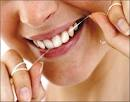A lot of people are embarrassed by bad breath, but it is a problem that can usually be solved. Certain foods and beverages can cause bad breath. When strong foods like onions and garlic are the cause, bad breath is only temporary. However, some people suffer from more permanent and lasting breath problems.
The causes of bad breath
Most bad breath, also known as halitosis, is caused by incomplete or insufficient oral hygiene, along with eating foods that contribute to bad breath. What you eat affects the air you exhale. Certain foods contribute to bad breath. Once the food is absorbed into the bloodstream, it is transferred to the lungs, where it is expelled.
Brushing, flossing and mouthwash will mask the odor only temporarily. Odors continue until the body eliminates the food. Dieters may develop unpleasant breath from infrequent eating.
Dry mouth
Another common cause of bad breath is dry mouth, which happens when the flow of saliva decreases. Saliva is necessary to cleanse the mouth and remove particles that may cause odor. Dry mouth happens naturally when you sleep. You may refer to it when you wake as “morning breath.” It is generally worse in those people who are “mouth breathers” or sleep with their mouths open and those who tend to snore more often.
Dry mouth also may be caused by certain medications, salivary gland problems, cancer chemotherapy, or head and neck radiation treatments. It also is simply more common to have dry mouth as you age. If you suffer from dry mouth, your dentist may prescribe artificial saliva or suggest using sugarless candy and increasing your fluid intake.
And smokers? Almost all people who use tobacco have bad breath. Talk to your dentist about ways to kick the habit.
Gum disease
Bad breath also may be a sign that you have other mouth issues, such as tooth decay or gum disease. One of the warning signs of gum disease is bad breath or a bad taste in the mouth. Gum disease is caused by plaque, the sticky, colorless film of bacteria that constantly forms on teeth.
The bacteria create toxins that irritate the gums. In the advanced stage of the disease, the gums, bone and other structures that support the teeth become damaged. With regular dental checkups, your dentist can detect and treat gum disease early. Sometimes, bad breath can be a sign of a more serious health issue. If your bad breath has a particular reoccurring odor; perhaps fishy, fruity or like ammonia, you might need to see your physician.
Diagnosis and treatment
When you eat, minute particles of food get trapped between your teeth and in tiny grooves and bumps on your tongue. That’s why proper brushing and flossing are the first line of defense against bad breath.
Many people use mouthwash to combat bad breath, but most over-the counter rinses are just a temporary mask and do not solve the underlying problem. Your local West Michigan Dental Society member dentist may recommend a medicated mouthwash instead. With good care on your part and professional care from your dentist, you can combat bad breath and enjoy life with confidence.
Brought to you by the 600 members of the West Michigan District Dental Society in
For more information visit our website; Office of Brian Nylaan facebook page; or Brian S. Nylaan, D.D.S. facebook page.
Schedule an appointment.





